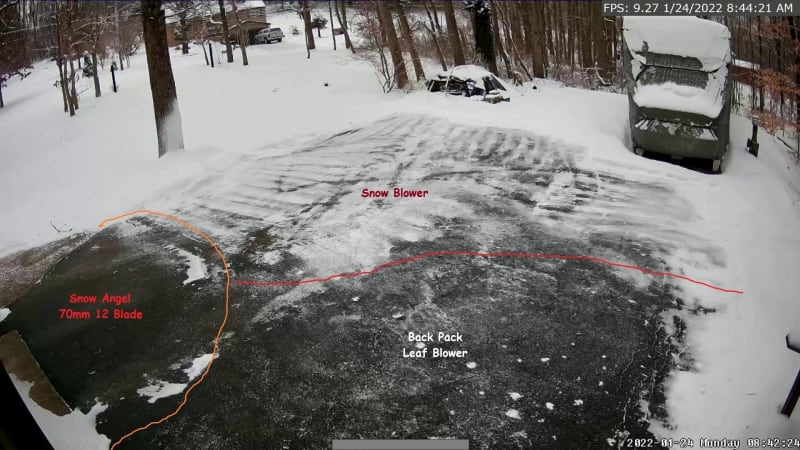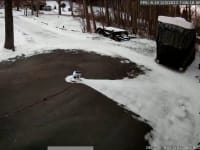Snowfall poses a significant threat for the elderly and an insurmountable obstacle for the disabled.
The American Journal of Emergency medicine reports that each year, an average of 11,500 people visit ERs due to snow-shoveling incidents. Harvard Health Publishing indicates around 100 people, predominantly men, die yearly in the U.S. during or immediately after shoveling snow. Grim statistics for the elderly. Snow shoveling strain, even for short periods, can be immense and, in some cases, fatal.
Current removal methods are lacking. The most common, manual shoveling, accounts for 51% of snow removal and puts elders at risk. Alternatively, snow blowers (costing $300-$1,000+) can be heavy and difficult to maneuver and robotic systems often struggle with the wet, slushy snow common in many areas. Heated surfaces ($15,000-$35,000 installation) offer a hands-free solution but high cost can make them inaccessible.
No existing solution prevents snow from accumulating. Therefore, the risk remains, forcing elders to choose between dangerous exertion or being housebound. It isn't just about convenience; it's about safeguarding the elderly.
Technical Innovation:
Snow Angel Shield shifts the paradigm from removal to pre-accumulation deflection through controlled laminar airflow. It creates a 12-to-18-inch elevated air barrier above target surfaces, generating 8-12 m/s velocity to redirect precipitation laterally before accumulation. To enhance efficiency, the barrier can be variable dependent on precipitation intensity.
Core Components:
- Ducted laminar air flow utilizing CFD-optimized nozzle geometry
- Weather sensing array (precipitation detection, wind monitoring, temperature)
- Microcontroller-based activation with predictive algorithms
- App controlled - manual override
Architecture:
Modular design enables 200-5000 SF coverage. Individual units create continuous airflow zones with 15% redundancy overlap.
Performance Specifications:
Prototype testing demonstrates 95% snow deflection efficiency in precipitation up to 2 inches/hour. Power consumption: 1.2 kW per 500 sq ft. Noise: <65 dB at 10 feet (comparable to HVAC systems).
Key Metrics:
- Activation: <30 seconds from detection
- Coverage uniformity: ±5% velocity variation
- Temperature range: -20°F to 31°F
- Reliability: 99.2% uptime over 100-hour testing
Manufacturing:
Leverages existing outdoor power equipment supply chains. Components use proven processes: injection molding, metal fabrication, electronic assembly.
Cost Structure:
- Production cost: $145/unit at 10,000 units
- Target retail: $700-1500
- Production scale: 5,000 units Year 1; 50,000 by Year 3
Market:
Initial Market: In Canada, the US Northeast and Midwest there are 15.3, 28.3 and 22.8 million households respectively. These areas experience frequent and severe winter storms with heavy snowfalls occurring regularly.
Advantage (1,500 sq ft driveway):
- Manual removal: $15-100+, 1-2+ hours, high risk
- Manual blowers: $400-800, 15-30 minutes, medium+ risk
- Robotic blowers: $5,000+, 45-60 minutes, moderate risk
- Snow Angel Shield: $700-1500, 0 minutes, minimal risk
Benefits:
Primary benefit: eliminates manual snow removal for high-risk populations. Secondary benefits include improved emergency access, reduced business interruption and decreased liability.
Snow Angel Shield addresses critical infrastructure resilience while providing measurable safety improvements through automated snow accumulation prevention.
Video
Like this entry?
-
About the Entrant
- Name:William Weaver
- Type of entry:teamTeam members:
- Eugene Scarberry
- Bob Humbert
- David Nordin
- Steve Stegman
- Praveen Kumar
- William Weaver
- Software used for this entry:Yes, for the current computer control module. App will also require software (future development).
- Patent status:pending









